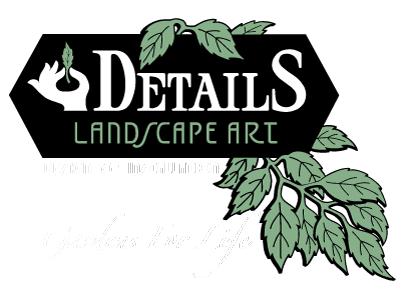Details Landscape Art, a Sonoma County landscape contractor, uses a variety of hardscape materials, including crushed rock, gravel and stones. Depending on the application, we may use some or all of these products. It is important to distinguish and understand the differences between the characteristics of crushed rock, gravel and stones.
Crushed rock:
The term ‘crushed rock’ or ‘crushed stone’ refers to any of a large variety of different types of rock that have been mechanically pulverized or ‘crushed’. It may be crushed and available in many different sizes, and are generally characterized by sharp corners, irregular shapes, and relatively flat surfaces. Mechanically crushed rock differs from smoother, more rounded stones that have been washed or otherwise eroded into rounder smoother surfaces. Because of this irregular shape, crushed rock doesn’t roll like more rounded stones, and the pieces tend to pack together better. Therefore, larger crushed rock well compacted is often used as base material. Quarry fines (dust from the crushing) can be used to fill the small spaces in between the pieces to further stabilize the material.
Smaller crushed rock, (3/4” to 5/8”), when washed free of clay and dust, packs together even better; and the little air spaces between the stones allow water to drain through. When the quarry fines are left, the little air spaces are filled and the material packs more densely, allowing water to pass slower. For these reasons, we used what’s called 3/4” clean crushed rock for French drains where we want the water to drain quickly into the drainpipe. Larger crushed rock with the fines included, is usually used for heavy traffic areas, such as utility areas (for sheds, for example), pathways that take heavy foot traffic, and car parking areas.
Class II base rock, on the other hand, is a recycled permeable product consisting of 3/4” crushed CONCRETE and fines, and is used as a base for poured concrete driveways, patios and walkways.
Gravel:
Gravel is a natural stone that has been eroded over time, usually by moving water. Gravel is available in a variety of sizes ranging from the smallest (pea gravel), to three quarters of an inch, inch and a half, and larger cobbles. We generally refrain from using gravel or cobbles as a traffic surface (neither walkways or patios), because the smoothness of the surface allows the stones to move easily. They therefore provide an unstable surface – people walking tend to sink or displace the stones, and it is not comfortable to walk on. We frequently use gravel for decorative purposes in our dry creek beds. They are available in a variety of colors and sizes, and can look very natural when selected for this application. Some types of decorative stones are:
‘Salt and pepper’- off white and gray
‘Sierra tan’ – tan

‘Trinity’ – tan to gold
‘River rock’ – medium gray
We also use small, quarter to half inch stones as a ‘seed’ rock in our seeded aggregate concrete applications. The smaller size stone lends itself to be floated down below the surface cream of the concrete when first poured, and then washed off when the concrete hardens around the stone, holding it in place.
Crushed rock, gravel and stones are available in various sizes and colors in Sonoma County.
